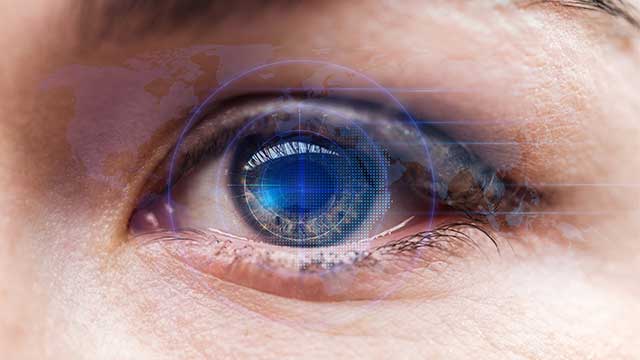Health-conscious people regularly seek ways to improve their lives and the ways that they perform their daily tasks. Obviously, there are parts of the human body that – with careful attention and a dedicated regimen – can be developed and, in some cases, even restored.
A person who’s committed to improving their physique, cardiovascular system, or neurological functioning has many options available to them. But what about those components of the body that seem to deteriorate over time, regardless of how rigorously we care for ourselves?
Take our eyes, for example. Can a person improve their eyesight?
Admittedly, there are dissenting opinions from experts on the topic, most of which are related to the type of damage a person’s eyes may have experienced. Generally, though, ophthalmologists agree that there are steps an individual can take to improve their eyesight and maintain their eye health.
Eye Conditions That Cannot Be Corrected
The American Optometric Association makes a clear distinction between eye diseases and circumstances that cannot be cured or fixed without the aid of corrective lenses, surgery, or medication. Among the conditions that they list are:
- Macular degeneration
- Cataracts
- Glaucoma
- Retinal detachment
- Acquired eyesight issues (brain injury)
Additional illnesses or disabilities – some of which are hereditary or initiated during prenatal development – can also be found on the AOA’s website. However, some illnesses connected to low vision or poor eyesight can also be linked to individual behavior patterns or secondary diseases, such as diabetes.
In these situations, it may be possible to improve one’s eye health without medical intervention.
Vitamins and Nutrients to Improve Eye Sight
The American Academy of Ophthalmology tells us that Vitamin A has an important influence on eyesight. A deficiency of Vitamin A—a diagnosis that can be made through an eye exam—can be correlated to blindness in children.
Additionally, as antioxidants, Vitamins E and C are essential in protecting against cell damage that causes aging. Therefore, these two vitamins are regularly listed among those that can aid in improving eye health.
Finally, research indicates that carotenoids such as lutein and zeaxanthin, along with omega-3 fatty acids and zinc, each contribute to the general health of the retina and help to alleviate the symptoms and challenges associated with age-related decline in a person’s vision.

Foods that feature these vitamins and nutrients include, but are not limited to:
- Almonds and peanuts
- Sunflower seeds
- Oranges, grapefruit, and tangerines
- Cantaloupe
- Tomatoes
- Strawberries
- Bell peppers
- Broccoli
- Kale
- Spinach
- Collard greens
It’s not surprising, then, that a diet consisting of healthy options would enhance the performance of every one of our body’s internal organs and systems and would also benefit our eyesight.
Give Your Eyes a Break

Another step toward improving your vision relates to the cultural changes we’ve experienced through the evolution of technology.
The fact is that now, more than ever, we are staring at and gathering information from screens. We work sitting at screens, play games at screens, socialize, do our banking or other finances, and more all on screens.
There are several symptoms related to a condition known as “digital eye strain,” which include headaches, double vision, increased sensitivity to light, and even neck or back pain.
There are several suggestions offered by the Mayo Clinic to mitigate these ailments and to improve one’s vision and comfort. Among these recommendations are:
- Limit the amount of time that you look at screens
- Adjust the lighting in the room and at your workstation to reduce eye strain
- Blink often and/or use artificial tear drops to promote eye moisture
Most experts agree with a concept widely known as the 20-20-20 rule. Essentially, for every 20 minutes a person spends looking at a screen, that person should take a short break to look at an object that is at least 20 feet away for a period of 20 seconds.
The idea behind this practice is to give your eyes a rest and to allow them to refocus and adjust in ways that are healthy, which can ease the stress that we often put them under unintentionally.
Sight Games for Improving Vision
Researchers continue to explore the ways that people can improve their visual perceptivity and peripheral acuity.
Specifically, recent efforts have been focused towards two occupations that demand excellent eyesight: Pilots and professional athletes.

In each of these roles, success is determined by supreme eye-hand coordination.
In one study performed with college baseball players, researchers employed a software program designed to operate like a video game. The software used brightly colored lines and signals to measure a user’s reaction time, often creating greater challenges by blurring the screen or implementing decoys with the intention of pushing a person’s visual limits.
After this training, some of the players’ vision had improved to the point that they could identify letters from a standard eye chart at a distance that was 300% further away than usual.
Some players also reported being able to diagnose pitches with increased clarity and enjoying a greater degree of peripheral vision.
Can you really improve your vision?
Ultimately, keep in mind that it remains unclear how much a person can improve their vision by using the strategies listed above.
The degree of success that a person will experience from these activities will directly relate to the conditions that cause the degenerating vision in the first place.
Sources
- https://www.aoa.org/healthy-eyes/caring-for-your-eyes/low-vision-and-vision-rehab
- https://www.aao.org/eye-health/diseases/vitamin-deficiency
- https://www.aoa.org/healthy-eyes/caring-for-your-eyes/diet-and-nutrition
- https://www.mayoclinic.org/diseases-conditions/eyestrain/diagnosis-treatment/drc-20372403
- https://www.discovermagazine.com/mind/athletes-improve-their-eyesight-with-virtual-training


Leave a Reply